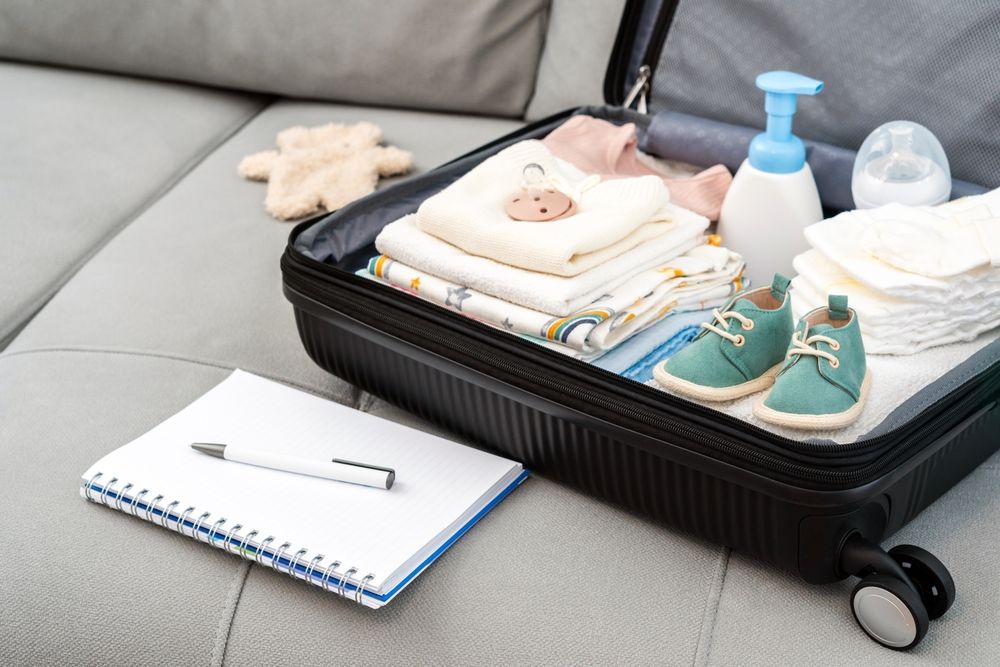The moment you’ve been waiting for is approaching—labor and delivery. Whether you’re a first-time parent or expecting another addition to your family, preparing for this monumental event is essential for a smooth, stress-free experience. At Capital Women’s Care Rockville, Dr. Judith Gurdian provides comprehensive care and guidance to ensure you are physically, mentally, and emotionally ready for labor and delivery.
In this blog, we’ll cover everything you need to know about preparing for labor and delivery, from packing your hospital bag to knowing when to head to the hospital.
Understanding the Stages of Labor
Before diving into preparation tips, it’s crucial to understand the different stages of labor to anticipate what’s ahead. Labor is divided into three stages: early labor, active labor, and the delivery of the placenta.
- Early Labor: This stage often starts with mild contractions and the dilation of the cervix. It can last anywhere from several hours to days.
- Active Labor: This is when contractions become stronger and more frequent. Your cervix dilates to 10 centimeters, and you’ll likely be heading to the hospital at this point.
- Delivery of the Placenta: After the baby is born, the placenta is delivered, marking the final stage of labor.
Understanding these stages helps you mentally prepare and know when to take action, such as contacting your healthcare provider or heading to the hospital.
Create a Birth Plan
A birth plan outlines your preferences for labor and delivery, such as pain relief options, who you want in the delivery room, and any specific birthing methods you wish to use. Dr. Gurdian encourages flexibility, but since labor is unpredictable, having a plan ensures that your preferences are considered.
Common elements of a birth plan include:
- Pain Management: Options like epidurals, nitrous oxide, or natural pain relief techniques.
- Labor Environment: Preferences for music, lighting, or aromatherapy.
- Support: Who you want in the room with you, whether a partner, family member, or doula.
Dr. Gurdian suggests discussing your birth plan with your healthcare team early on so everyone is on the same page. This helps reduce any last-minute stress or confusion when the time comes.
Practice Relaxation Techniques
Labor is as much a mental challenge as it is a physical one. Practicing relaxation techniques during pregnancy can help you manage pain and stress during labor. Techniques such as deep breathing, visualization, and progressive muscle relaxation can be incredibly beneficial.
Dr. Gurdian recommends taking prenatal classes that focus on these methods or practicing them at home with the guidance of a partner or support person. Learning how to remain calm and centered during contractions can significantly improve your labor experience.
Pack Your Hospital Bag Early
One of the most practical steps is packing your hospital bag in advance. Ideally, you should have it ready by week 36 of pregnancy. Dr. Gurdian advises packing for both comfort and practicality. Here’s a checklist to help you prepare:
- For You:
- Comfortable clothing, including a robe, slippers, and socks.
- Toiletries such as toothpaste, shampoo, and lip balm.
- Maternity bras and nursing pads.
- A phone charger, snacks, and water bottle.
- For Baby:
- Onesies, socks, and a going-home outfit.
- Swaddle blankets.
- Diapers and wipes.
- A car seat installed and ready to go.
By packing in advance, you’ll feel more prepared and relaxed when labor begins, knowing that everything you need is ready to go.
Know the Signs of Labor
It’s important to know the signs of labor to determine when to head to the hospital or call Dr. Gurdian. Key signs include:
- Contractions: If your contractions are regular and closer together, it’s a strong sign that labor is beginning. Time the duration and frequency of your contractions; typically, you should head to the hospital when they’re 5 minutes apart and last for about 1 minute each.
- Water Breaking: The amniotic sac rupture is another clear sign of labor. If your water breaks, you should contact your healthcare provider immediately.
- Back Pain: Persistent lower back pain can sometimes indicate labor, especially if accompanied by other signs.
- Bloody Show: This is the passage of the mucus plug from the cervix, signaling that labor is near.
If you’re unsure whether you’re in labor, it’s always best to seek guidance from Dr. Gurdian.
Stay Active and Healthy
Staying physically active throughout pregnancy can help prepare your body for labor and delivery. Exercise strengthens your muscles, improves circulation, and boosts endurance—all of which are important for labor. Dr. Gurdian encourages low-impact exercises like walking, swimming, and prenatal yoga.
In addition to staying active, maintaining a healthy diet rich in vitamins, minerals, and hydration is crucial. Eating a well-balanced diet can help you sustain energy levels and avoid complications during labor. Foods rich in fiber, protein, and healthy fats can also support a smoother recovery post-delivery.
Know Your Pain Relief Options
Every woman’s labor experience differs, and pain relief is a personal choice. It’s important to know your options and discuss them with Dr. Gurdian so that you’re prepared when labor begins. Common pain relief options include:
- Epidural: A form of regional anesthesia that provides significant pain relief but doesn’t numb you completely. It allows you to remain awake and alert during delivery.
- Nitrous Oxide: Also known as laughing gas, this option is inhaled and helps reduce pain without eliminating it entirely.
- Natural Methods: Some women prefer to manage labor pain through natural methods, such as breathing techniques, massage, and water immersion.
Dr. Gurdian encourages patients to be open-minded about pain relief and flexible during labor, as plans may need to change depending on labor’s progress.
Prepare for the Unexpected
Labor and delivery can be unpredictable, and it’s essential to prepare yourself for unexpected changes. These might include longer labor than anticipated, the need for a cesarean section, or complications that arise during delivery.
You can navigate these challenges with less stress by staying mentally flexible and trusting your healthcare team. Dr. Gurdian and the Capital Women’s Care Rockville team are experienced in managing all types of deliveries, ensuring that both you and your baby receive the best care.
Focus on Postpartum Preparation
While labor is a significant event, preparing for the postpartum period is equally important. Make sure you have a support system for after delivery, whether it’s family, friends, or a postpartum doula. This support can help with tasks like cooking, cleaning, and caring for your baby so that you can focus on recovery.
Dr. Gurdian also emphasizes the importance of scheduling a postpartum visit to check on your physical and emotional health after delivery. This visit is crucial for ensuring that you’re healing properly and adjusting to your new role as a mother.
Embrace the Journey
Preparing for labor and delivery is a multifaceted process that involves mental, physical, and emotional readiness. Following these steps and staying informed will give you confidence and peace of mind to your delivery day. Dr. Judith Gurdian and the Capital Women’s Care Rockville team are here to guide you every step of the way, ensuring a safe and positive birthing experience.
With the right preparation, you can embrace the journey of labor and delivery, knowing that you are fully equipped for this life-changing event.
Sources:
Roberts, M. (2020). The Importance of Birth Plans. Journal of Obstetric Care.
Thomas, L., & Harris, K. (2019). Pain Relief Options During Labor. Maternal Health Research.
Jameson, P. (2021). Preparing for Postpartum Recovery. Women’s Health Quarterly.


